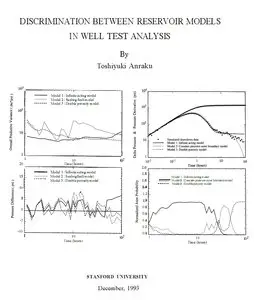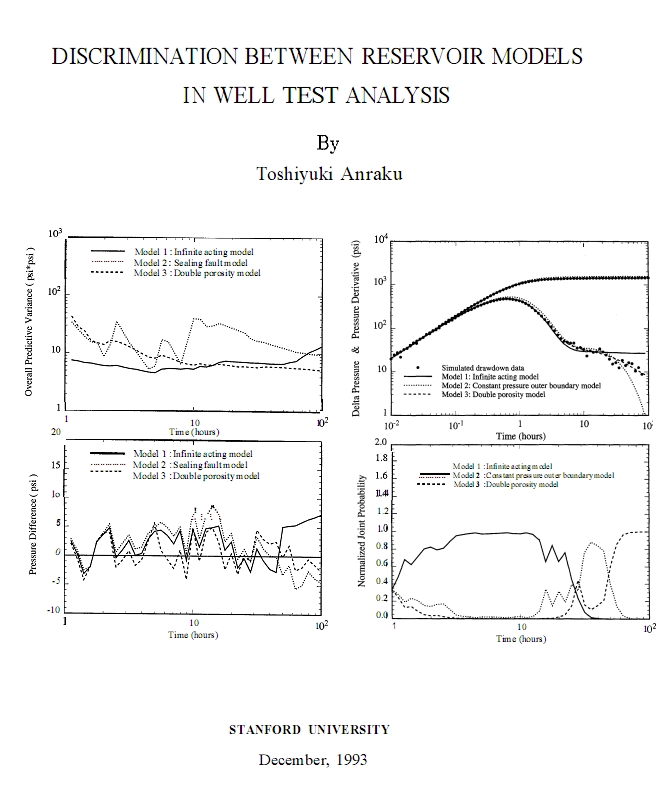"Discrimination Between Reservoir Models in Well Test Analysis" by Toshiyuki Anraku
Stanford University | 1993 | ISBN: n/a | 265 pages | PDF | 6 Mb
Describes a new quantitative method, the sequential predictive probability method, to discriminate between candidate reservoir models. Method was originally proposed in the field of applied statistics to construct an effective experimental design and is modified in this study for effective use in model discrimination in well test analysis.
ES Mirror • | • RS Download
This method is based on Bayesian inference, in which all information about the reservoir model and, subsequently, the reservoir parameters deduced from well test data are expressed in terms of probability. Eight fundamental reservoir models, which are the infinite acting model, the sealing fault model, the no flow outer boundary model, the constant pressure outer boundary model, the double porosity model, the double porosity and sealing fault model, the double porosity and no flow outer boundary model, and the double porosity and constant pressure outer boundary model, were employed in this study and the utility of the sequential predictive probability method for simulated and actual field well test data was investigated. Uncertainty involved in estimating reservoir parameters from a well test interpretation originates from the fact that different reservoir models may appear to match the pressure data equally well. A successful well test analysis requires the selection of the most appropriate model to represent the reservoir behavior. This step is now performed by graphical analysis using the pressure derivative plot and confidence intervals. The selection by graphical analysis is influenced by human bias and, as a result, the result may vary according to the interpreter. Confidence intervals can provide a quantitative evaluation of the adequacy of a single model but is less useful to discriminate between models.
ES Mirror • | • RS Download



